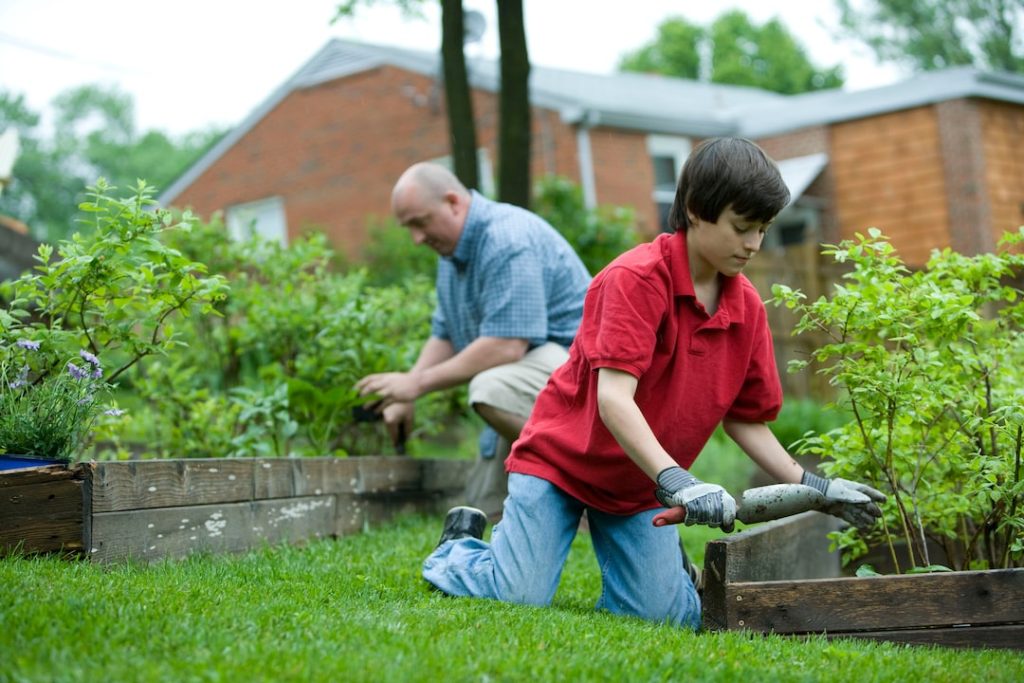Share this @internewscast.com
Have you ever thought about starting a garden, but wasn’t sure where to start? Or maybe you’re looking for ways to save money on your groceries by growing your own food. Either way, starting a small home garden is a great way to do it! In this blog post, we will explore how to start a low-cost small home garden in 2023. We will cover topics such as what plants to choose, what type of soil to use, and how to water your plants. By the end of this post, you will have all the information you need to get started on your very own gardening journey!
Finding the right location
It is important to find the right location for your garden. You want a spot that gets plenty of sunlight and has good drainage. You also want to make sure the area is large enough to accommodate the type of garden you want to create. If you are starting a small home garden, you may not need a lot of space, but you will still need enough room to grow the plants you want.
Once you have found the perfect location for your garden, it is time to start planning your design. This is where you decide what type of garden you want to create and what types of plants you want to grow. You will also need to consider how much space you have available and how much time you are willing to spend caring for your garden.
Read Also:
What type of garden do you want?
There are many different types of gardens that you can have in your home, and the type of garden that you want will depend on a few different factors. First, think about what kinds of plants you want to grow. Do you want to grow vegetables, herbs, flowers, or a combination of all three? Once you know what kind of plants you want to grow, research which type of garden would be best for those specific plants. For example, if you want to grow vegetables, raised beds or container gardening might be a good option. If you’re interested in growing flowers, consider a cutting garden or an English cottage garden.
Once you’ve decided on the type of plants you want to grow and the type of garden that would work best for those plants, consider your budget and the amount of space you have available. Raised beds and container gardens are generally more expensive than traditional gardens, but they can be a great option if you don’t have a lot of space. If you have a larger budget and more space to work with, consider building a greenhouse or cold frame so you can extend your growing season and get a head start on planting in the spring.
No matter what type of garden you decide to create, remember that starting small is always better than biting off more than you can chew. It’s better to have a small, well-maintained garden than a large one that becomes overgrown and unmanageable.
Read Also:
What plants will you grow?
Assuming you have a bit of space to work with, there are many plants that do well in small home gardens. One of the best things about gardening is that you can tailor it to your own personal preferences. Perhaps you want to grow vegetables for cooking, herbs for medicinal purposes, or flowers for decoration.
Some examples of plants that would do well in a small home garden include tomatoes, lettuce, peppers, eggplant, zucchini, squash, beans, carrots, radishes, and turnips. These can all be grown in containers if necessary. For herbs, try basil, chives, cilantro, mint, oregano, rosemary, and thyme. And finally, some popular flowers to consider are impatiens, petunias, marigolds, and daisies.
Of course, this is just a small sampling of what’s out there – the possibilities are endless! Do some research on what grows well in your area and make a list of what you’d like to grow. Once you have an idea of what you’d like to grow; you can start planning your garden layout and getting those seeds planted!
Getting the supplies you need

You don’t need much to start a small garden at home. A few essential supplies include:
-Seeds or seedlings
-Potting soil
-Pots or containers
-Water
-Fertilizer (optional)
If you’re starting with seeds, you’ll need to get some potting soil and pots or containers to start them in. You can find these at any gardening center or home improvement store. Make sure to get a potting mix that’s specifically for seeds – it’s finer and has different nutrients that will help your seeds germinate and grow.
Once you have your potting soil and containers, it’s time to plant! Fill each container with soil, then plant your seeds according to the package directions. Once they’re planted, water them well. Seeds need moisture to sprout, so keep the soil moist but not soggy. If you live in a warm climate, you may need to water your seeds twice a day; in cooler climates, once a day should suffice.
After a week or two, your seedlings should start to emerge. Once they’ve grown a couple of inches tall, you can thin them out if necessary – this just means transferring the healthier-looking seedlings into their own pots, giving them more room to grow.
As your plants grow, you may want to fertilize them occasionally with an all-purpose fertilizer. This is especially important if you’re
Starting your garden
If you’re interested in starting a small home garden, there are a few things you’ll need to take into consideration. First, you’ll need to decide what type of plants or vegetables you’d like to grow. Once you’ve decided on the types of plants you’d like to grow, it’s time to start preparing your garden space.
If you have a small yard, you may want to consider growing your plants in containers. This will allow you to maximize your space and prevent your plants from taking over your entire yard. You can find containers at most hardware or home improvement stores. Once you’ve selected your containers, it’s time to fill them with soil. Be sure to use a high-quality potting mix that is specifically designed for container gardening.
After your containers are filled with soil, it’s time to start planting! You can either purchase seedlings from a nursery or grow your own seeds. If you’re growing your own seeds, be sure to start them indoors in a warm, sunny location before transplanting them outdoors. Once your seedlings are ready to be transplanted, choose a sunny spot in your garden and carefully transplant them into their new home.
Water your plants regularly and be sure to provide them with the proper amount of sunlight and nutrients. With a little love and care, your small home garden will thrive!
Maintaining your garden
Assuming you would like tips for starting a low-cost small home garden:
1. Maintaining your garden can be easy and inexpensive if you follow a few simple tips.
2. First, choose plants that are appropriate for your climate and soil type. You can get this information from your local nursery or extension office.
3. Once you have selected your plants, make sure to properly prepare your planting area. This includes removing any weeds, rocks, or debris, and loosening the soil so that the roots can easily spread.
4. Before you plant, make sure to water the area thoroughly. This will help the plants get established more quickly.
5. After planting, water regularly and fertilize as needed according to the instructions on the fertilizer package.
6. To keep weeds from taking over your garden, pull them regularly or use an organic mulch around your plants.
7. Finally, don’t forget to enjoy your garden! Regularly spending time in it will help you catch problems early and appreciate all of your hard work
Harvesting your crops
Harvesting your crops is one of the most important aspects of gardening. Not only does it ensure that you have a bountiful harvest, but it also allows you to enjoy the fruits (or vegetables) of your labor. Here are a few tips to help you harvest your crops:
1. Know when to harvest. This will vary depending on the crop, but generally speaking, most crops are ready to be harvested when they are ripe or full-grown. Pay attention to the appearance of your plants and consult a gardening guide if you are unsure.
2. Use the right tools. For most crops, all you will need is a sharp knife or pair of shears. However, some crops (like tomatoes) may require specialized tools like tomato cages or pruning shears.
3. Be gentle. When harvesting your crops, handle them gently so as not to damage them. For example, when picking tomatoes, be sure to hold them by the stem and avoid squeezing them too hard.
4. Store properly. Once you have harvested your crop, it is important to store it properly so that it stays fresh and lasts longer. Consult a gardening guide or search online for tips on how to best store your particular crop


